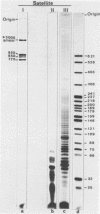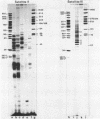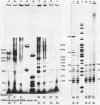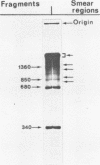Abstract
In an extensive analysis, using a range of restriction endonucleases, HinfI and TaqI were found to differentiate satellites I, II and III & IV. Satellite I is resistant to digestion by TaqI, but is cleaved by HinfI to yield three major fragments of approximate size 770, 850 and 950bp, associated in a single length of DNA. The 770bp fragment contains recognition sites for a number of other enzymes, whereas the 850 and 950bp fragments are "silent" by restriction enzyme analysis. Satellite II is digested by HinfI into a large number of very small (10-80bp) fragments, many of which also contain TaqI sites. A proportion of the HinfI sites in satellite II have the sequence 5'GA(GC)TC. The HinfI digestion products of satellites III and IV form a complete ladder, stretching from 15bp or less to more than 250bp, with adjacent multimers separated by an increment of 5bp. The ladder fragments do not contain TaqI sites and all HinfI sites have the sequence 5'GA(AT)TC. Three fragments from the HinfI ladder of satellite III have been sequenced, and all consist of a tandemly repeated 5bp sequence, 5'TTCCA, with a non-repeated, G+C rich sequence, 9bp in length, at the 3' end.
Full text
PDF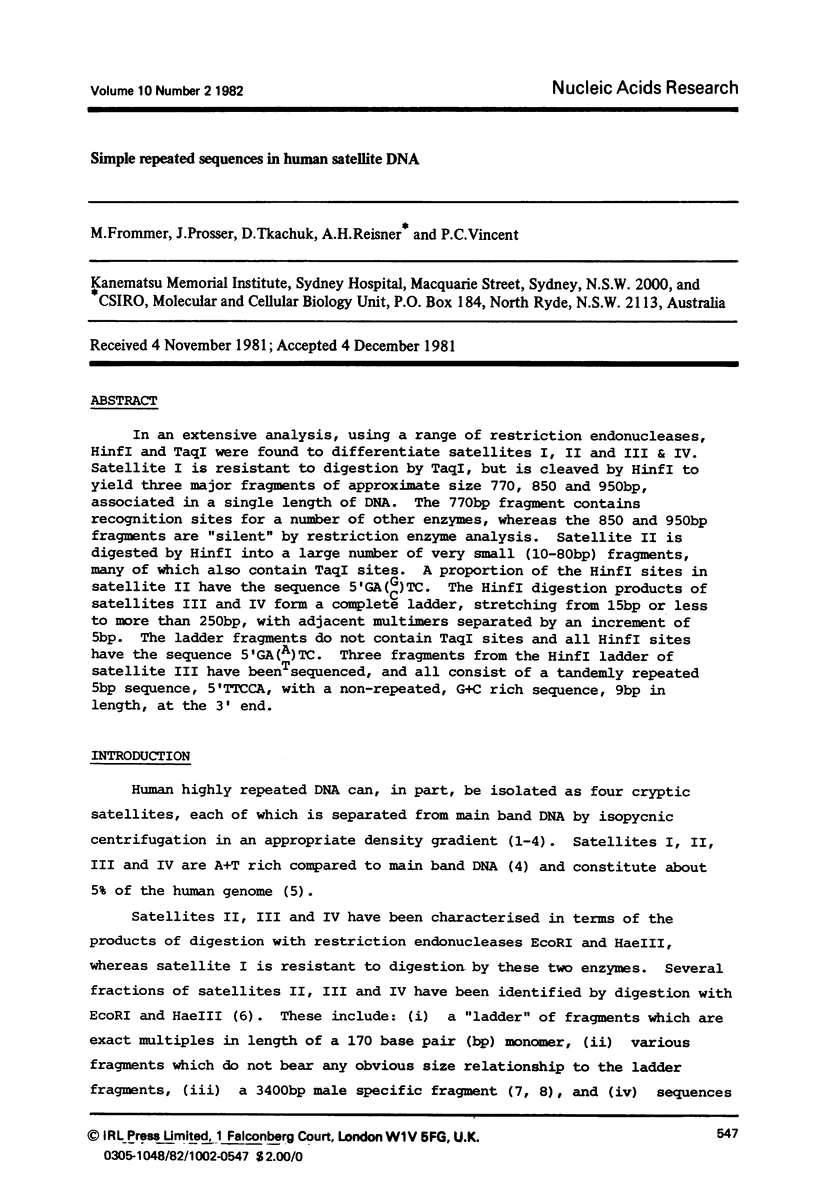
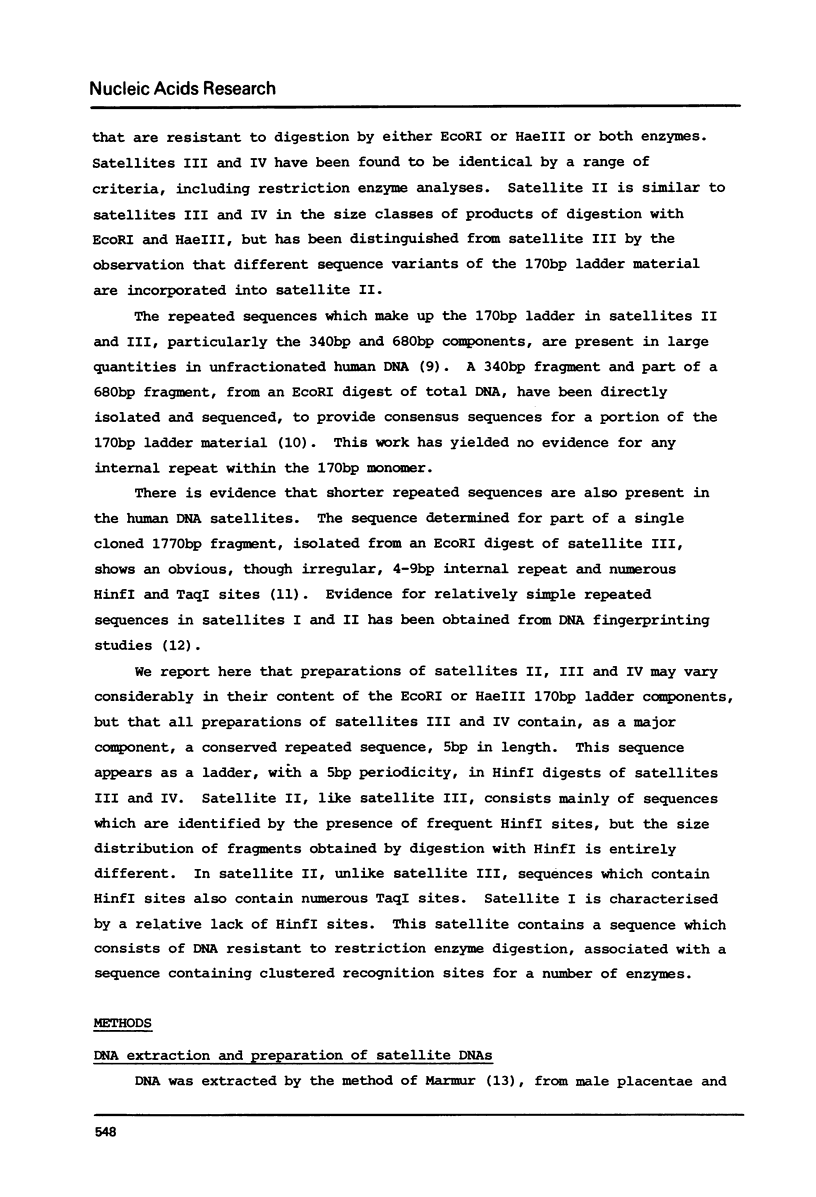
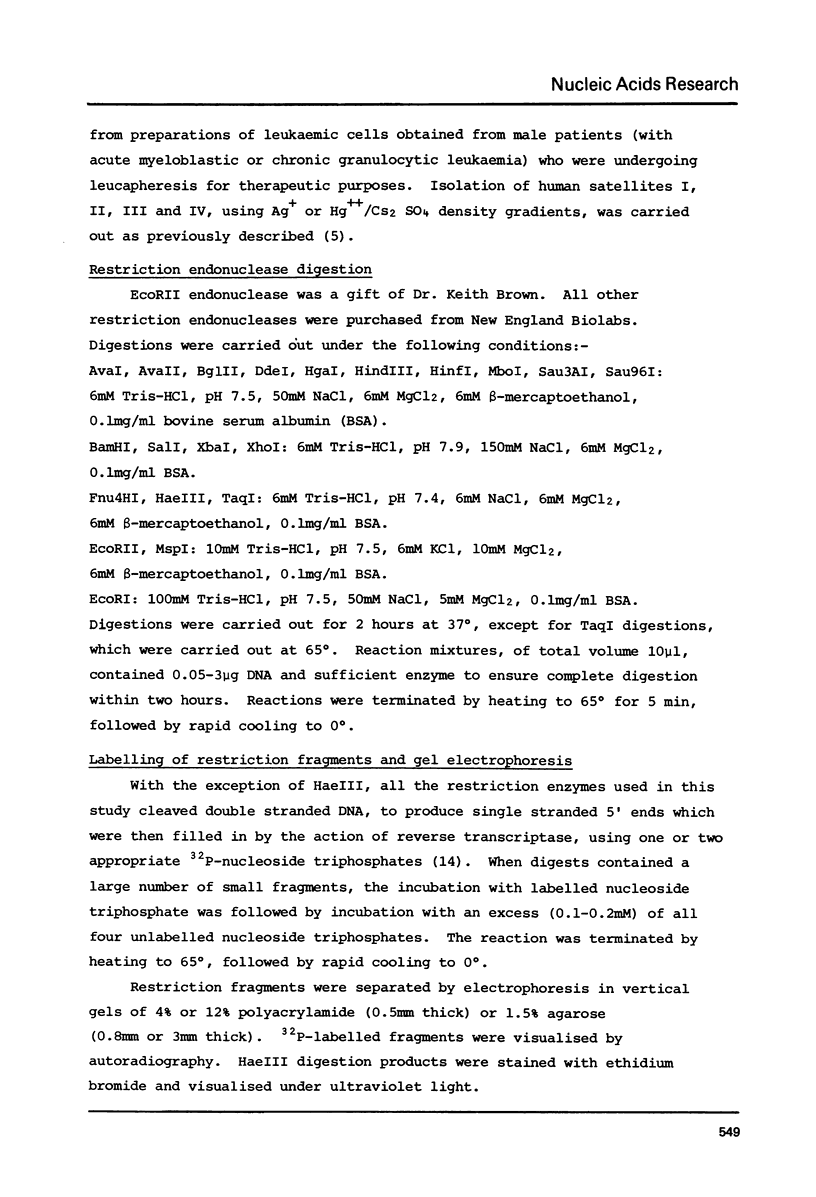
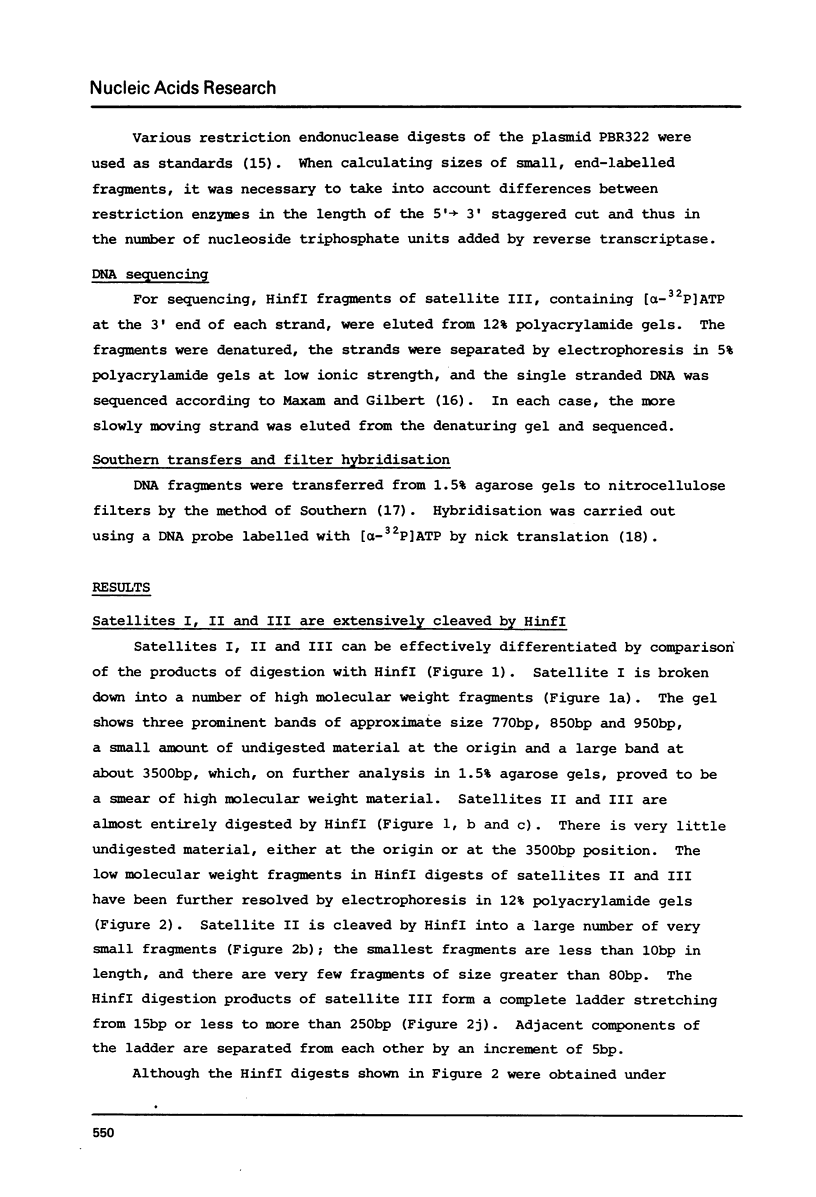
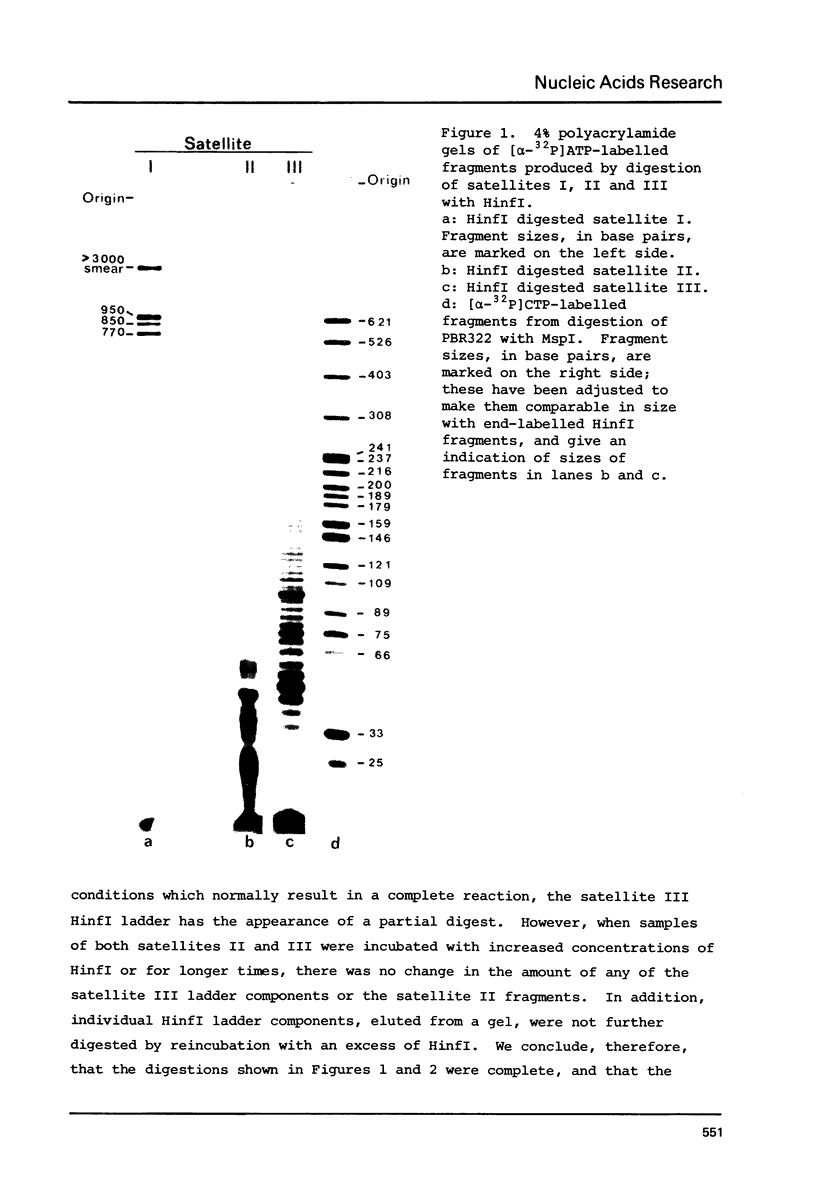
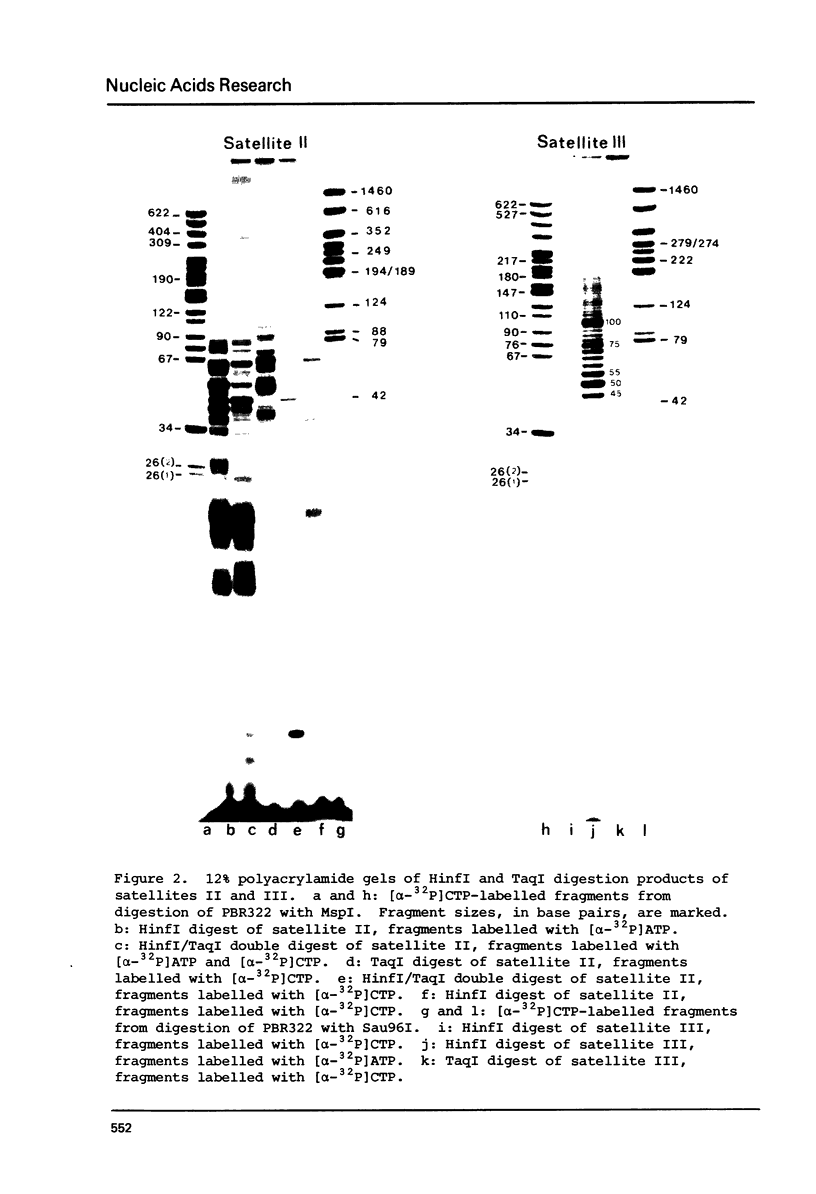
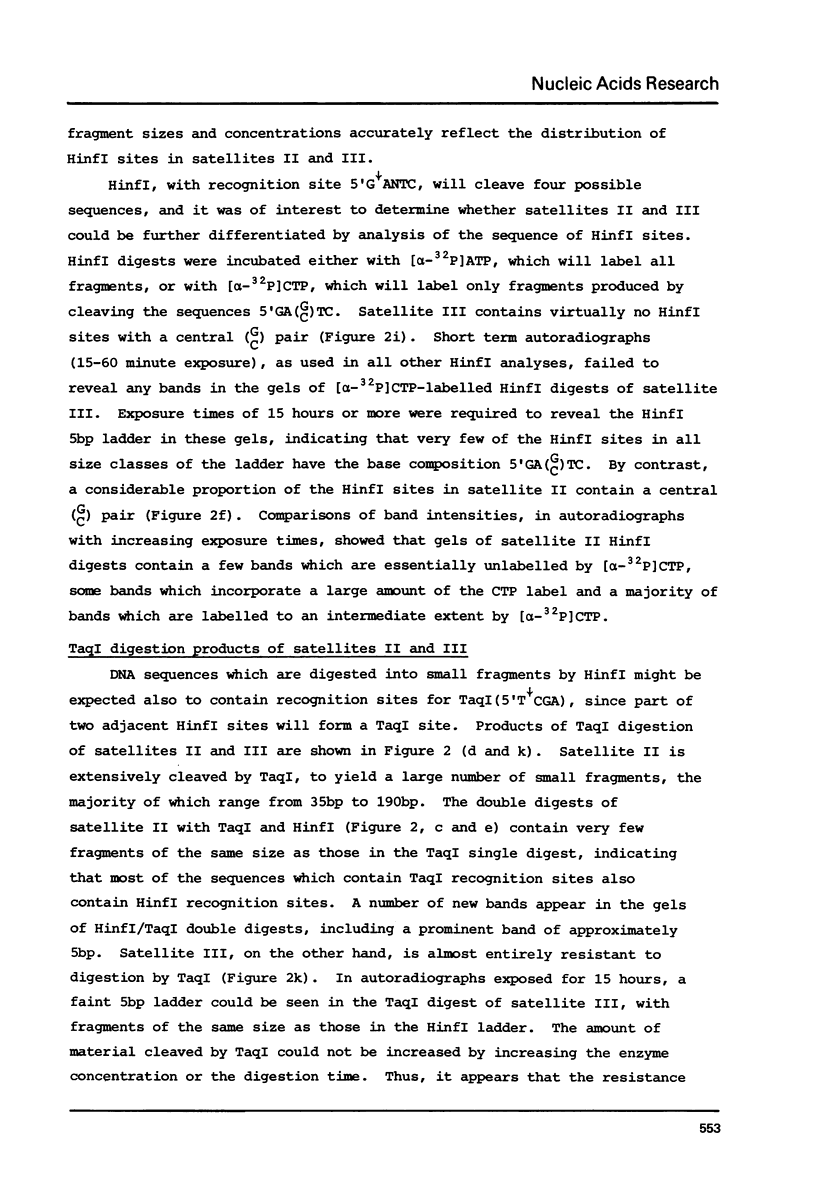
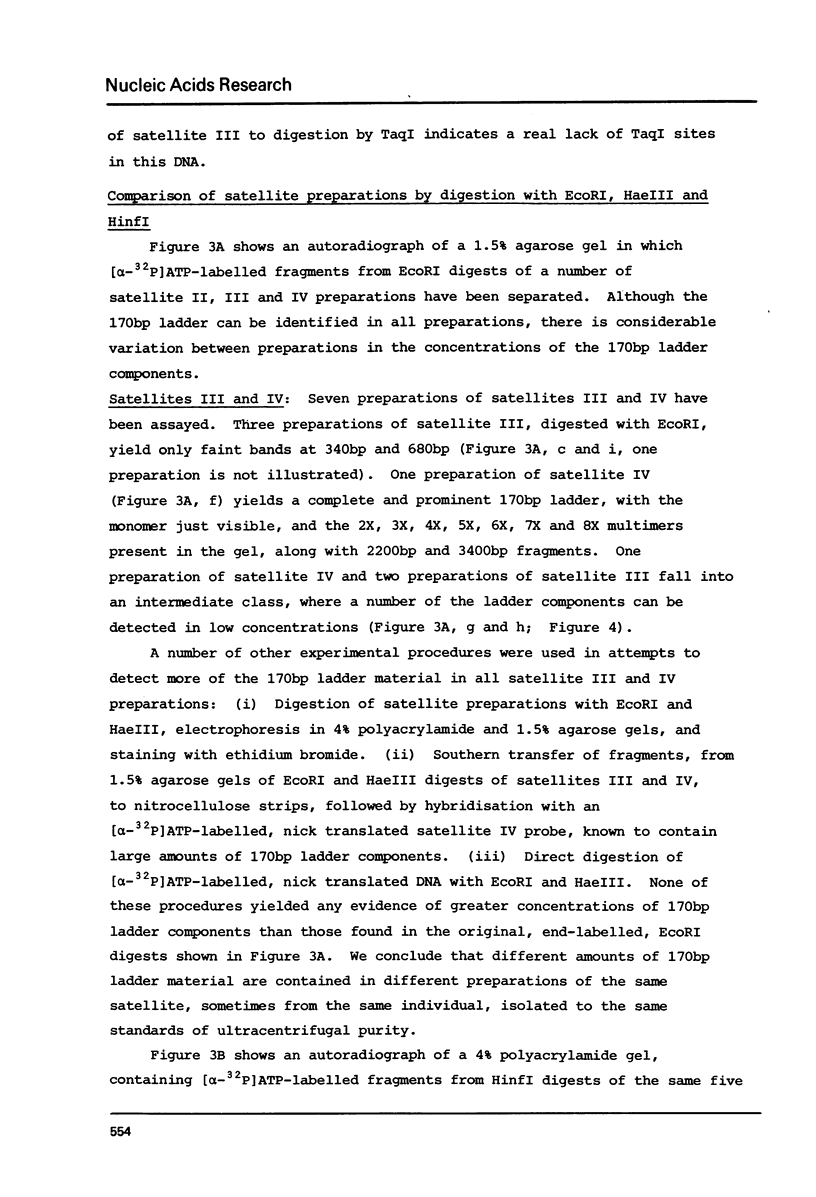
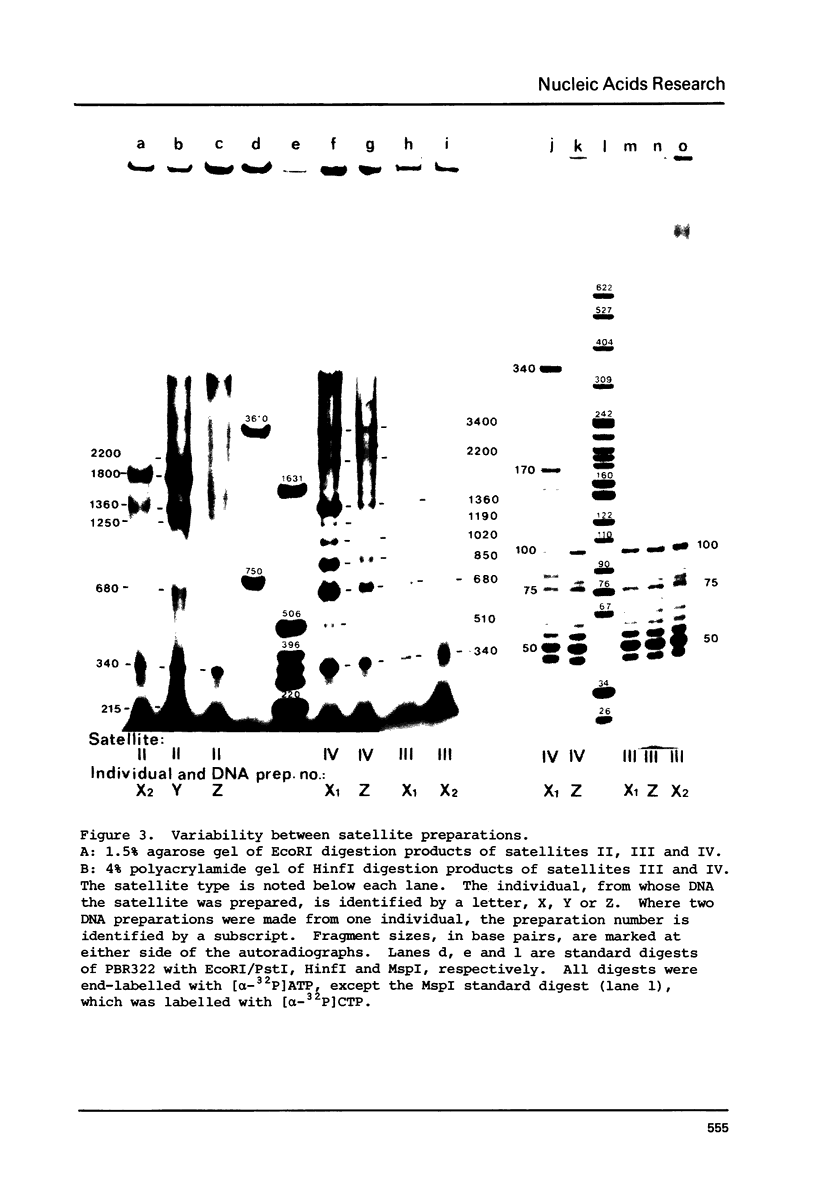
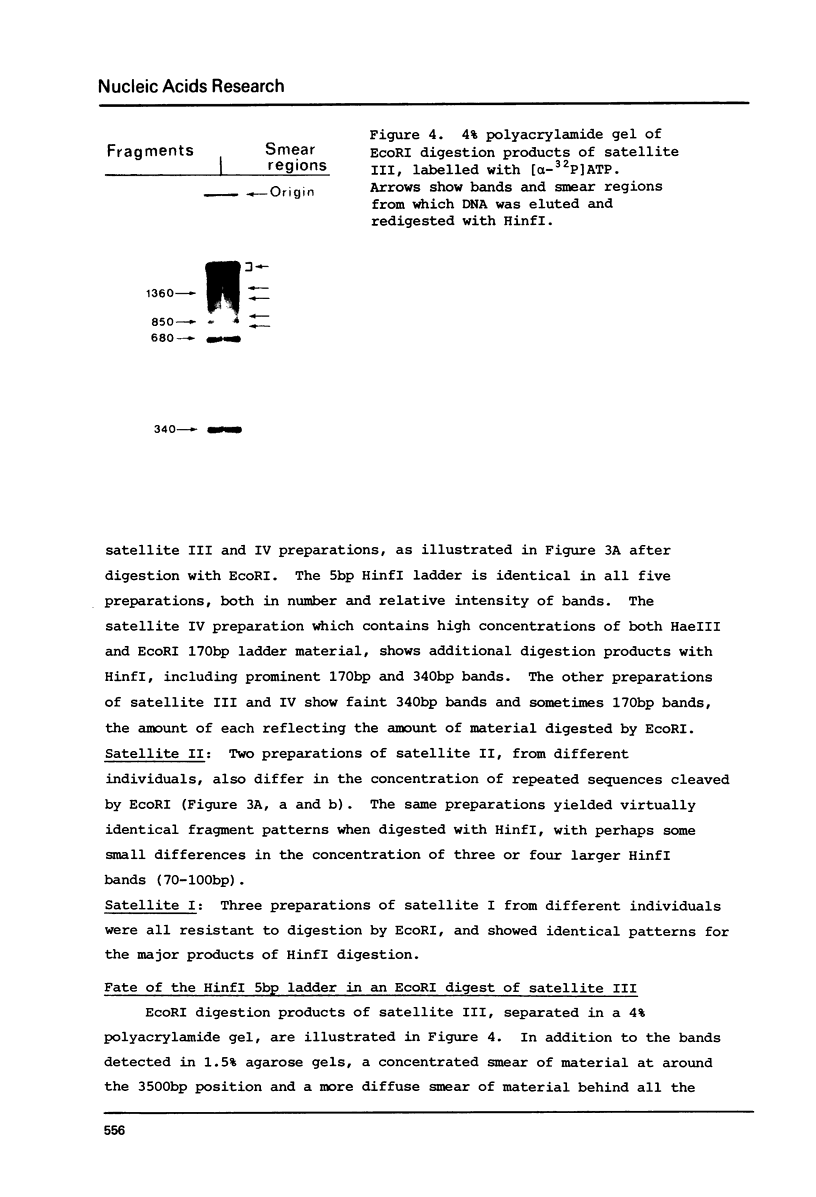
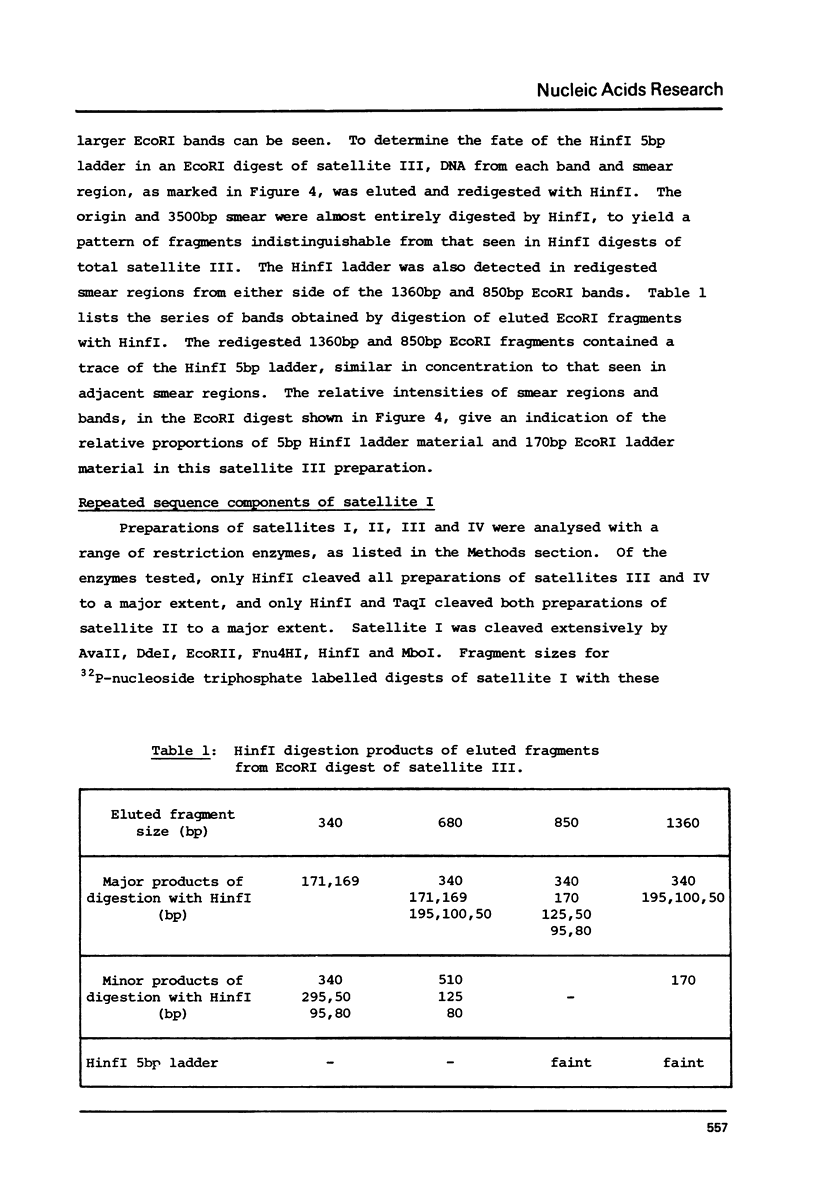
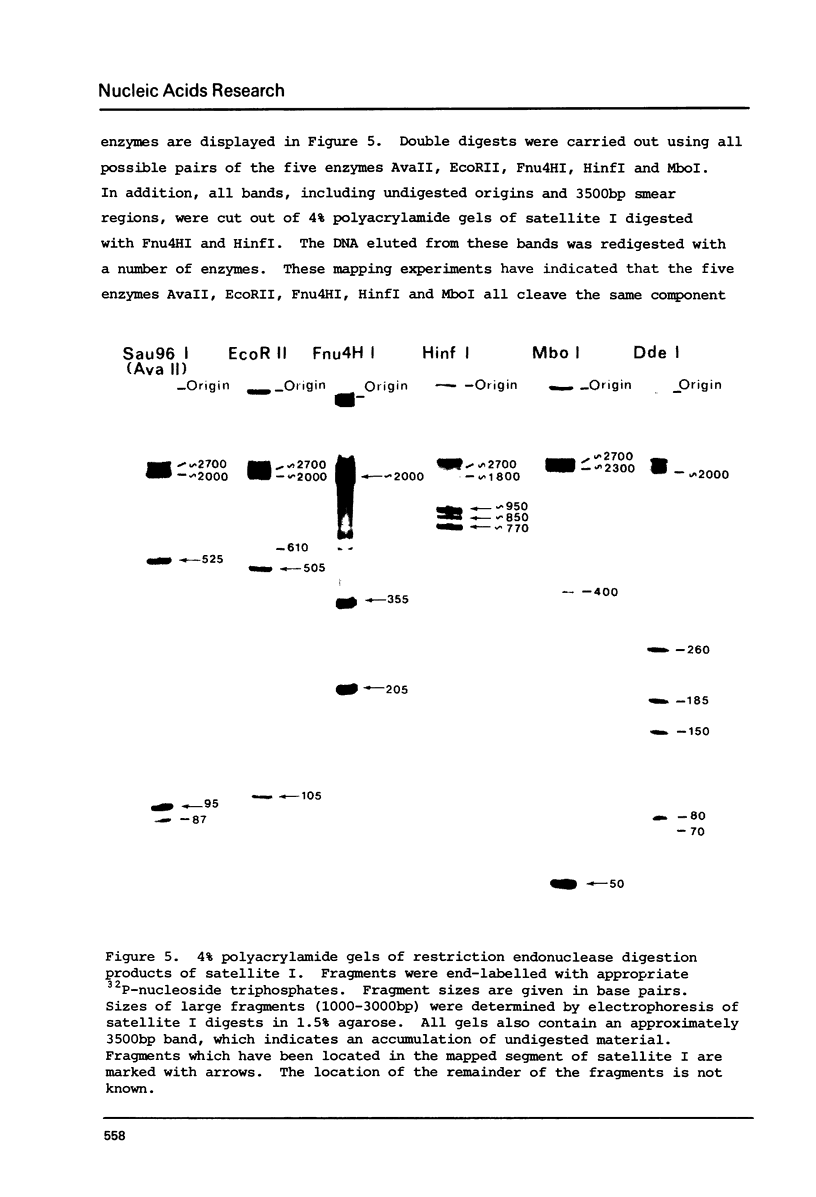
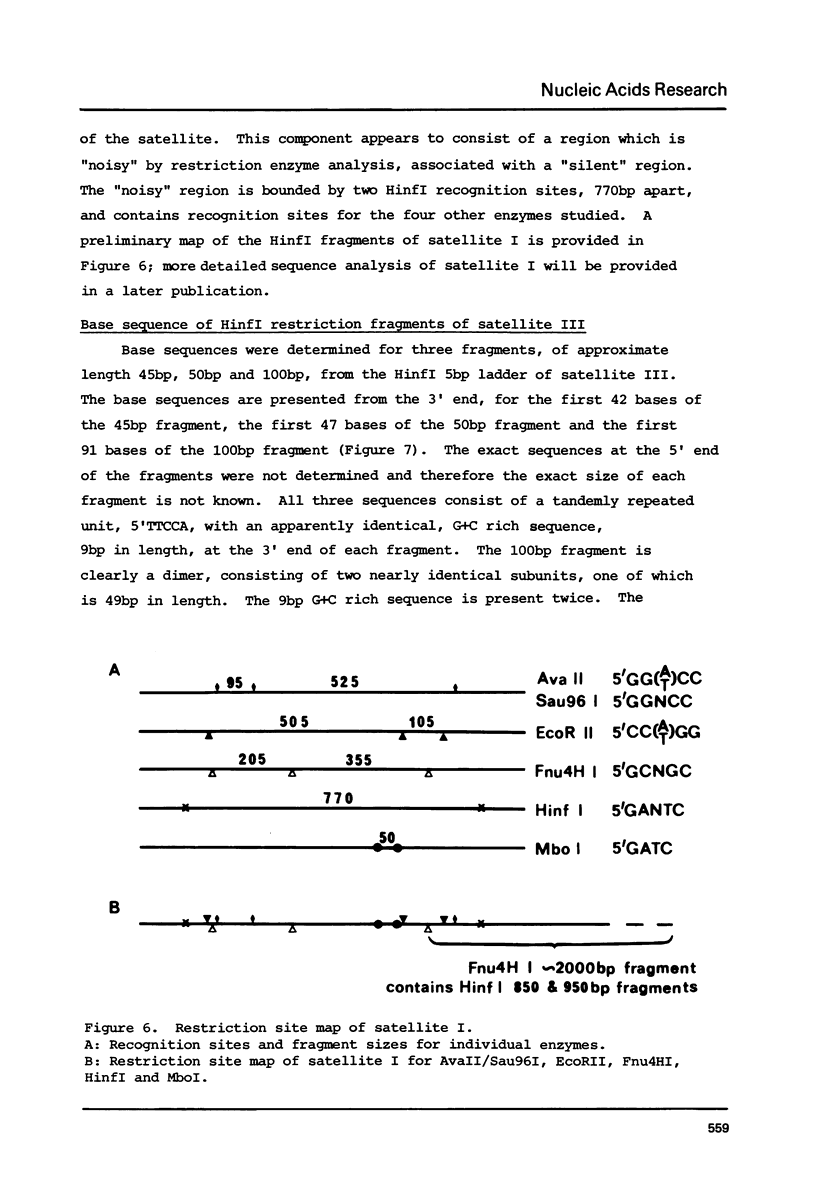
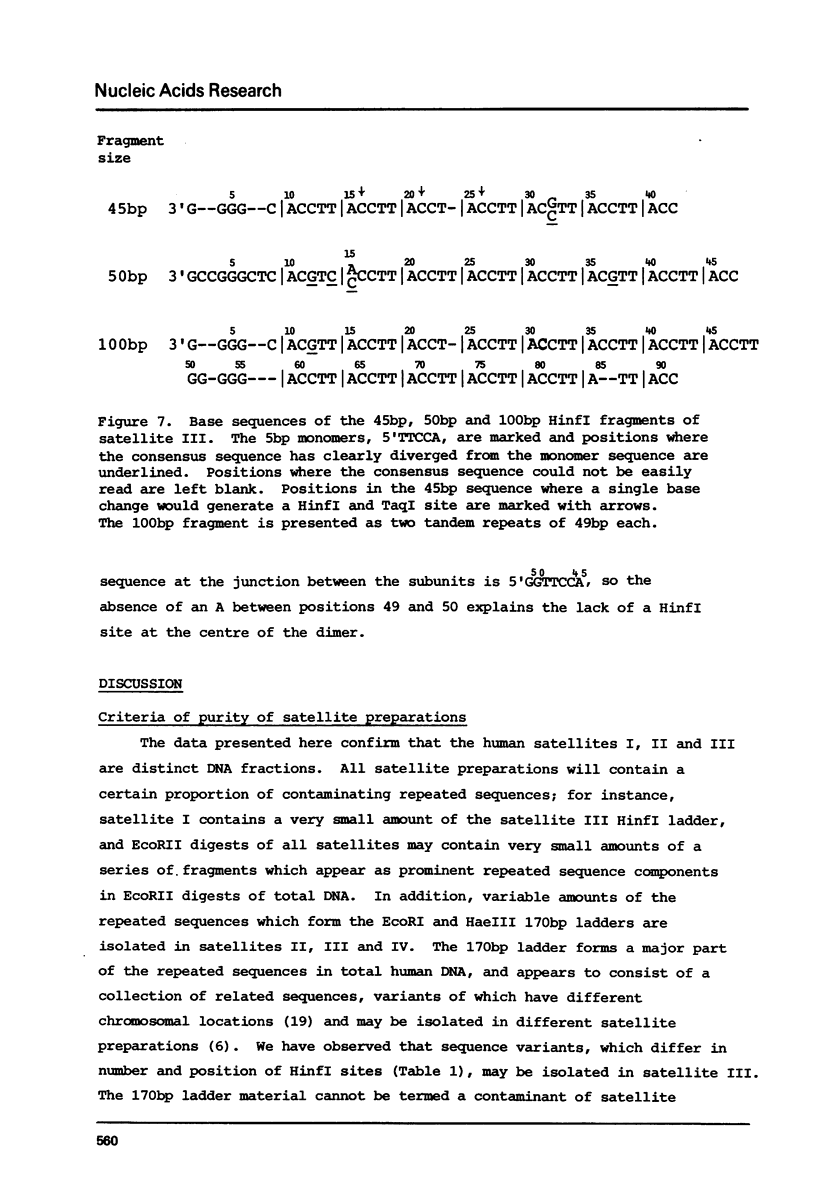
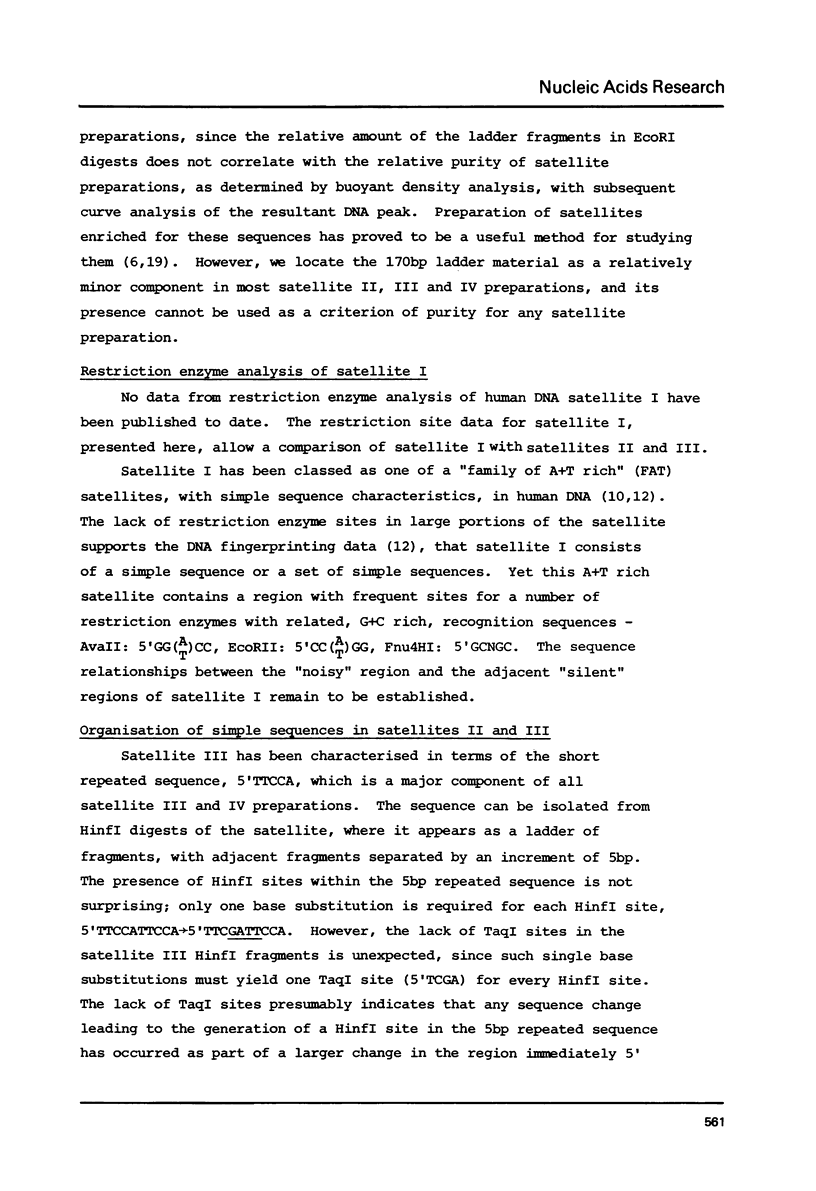
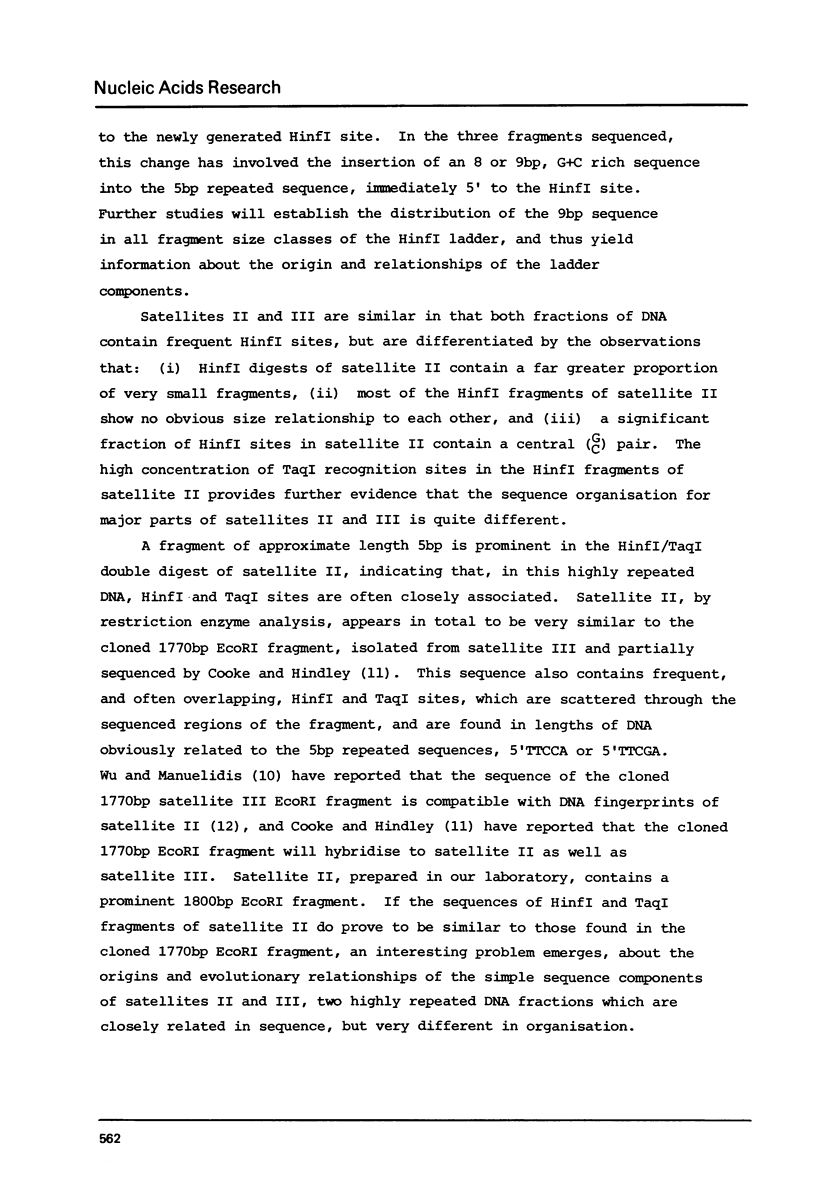
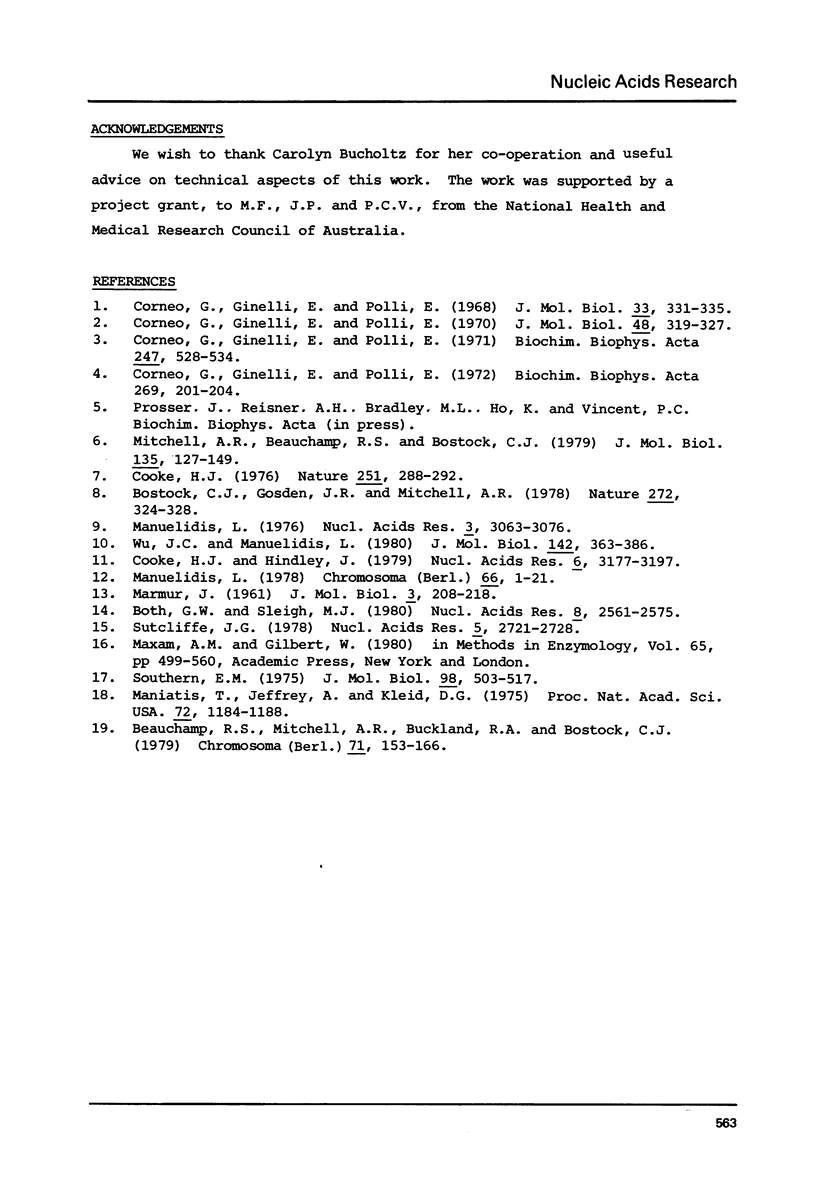
Images in this article
Selected References
These references are in PubMed. This may not be the complete list of references from this article.
- Beauchamp R. S., Mitchell A. R., Buckland R. A., Bostock C. J. Specific arrangements of human satellite III DNA sequences in human chromosomes. Chromosoma. 1979 Feb 21;71(2):153–166. doi: 10.1007/BF00292820. [DOI] [PubMed] [Google Scholar]
- Bostock C. J., Gosden J. R., Mitchell A. R. Localisation of a male-specific DNA fragment to a sub-region of the human Y chromosome. Nature. 1978 Mar 23;272(5651):324–328. doi: 10.1038/272324a0. [DOI] [PubMed] [Google Scholar]
- Both G. W., Sleigh M. J. Complete nucleotide sequence of the haemagglutinin gene from a human influenza virus of the Hong Kong subtype. Nucleic Acids Res. 1980 Jun 25;8(12):2561–2575. doi: 10.1093/nar/8.12.2561. [DOI] [PMC free article] [PubMed] [Google Scholar]
- Cooke H. J., Hindley J. Cloning of human satellite III DNA: different components are on different chromosomes. Nucleic Acids Res. 1979 Jul 25;6(10):3177–3197. doi: 10.1093/nar/6.10.3177. [DOI] [PMC free article] [PubMed] [Google Scholar]
- Corneo G., Ginelli E., Polli E. Isolation of the complementary strands of a human satellite DNA. J Mol Biol. 1968 Apr 14;33(1):331–335. doi: 10.1016/0022-2836(68)90301-x. [DOI] [PubMed] [Google Scholar]
- Corneo G., Ginelli E., Polli E. Renaturation properties and localization in heterochromatin of human satellite DNA's. Biochim Biophys Acta. 1971 Nov 19;247(4):528–534. doi: 10.1016/0005-2787(71)90689-7. [DOI] [PubMed] [Google Scholar]
- Corneo G., Ginelli E., Polli E. Repeated sequences in human DNA. J Mol Biol. 1970 Mar 14;48(2):319–327. doi: 10.1016/0022-2836(70)90163-4. [DOI] [PubMed] [Google Scholar]
- Corneo G., Zardi L., Polli E. Elution of human satellite DNAs on a methylated albumin kieselguhr chromatographic column: isolation of satellite DNA. IV. Biochim Biophys Acta. 1972 May 10;269(2):201–204. doi: 10.1016/0005-2787(72)90427-3. [DOI] [PubMed] [Google Scholar]
- Maniatis T., Jeffrey A., Kleid D. G. Nucleotide sequence of the rightward operator of phage lambda. Proc Natl Acad Sci U S A. 1975 Mar;72(3):1184–1188. doi: 10.1073/pnas.72.3.1184. [DOI] [PMC free article] [PubMed] [Google Scholar]
- Manuelidis L. Complex and simple sequences in human repeated DNAs. Chromosoma. 1978 Mar 22;66(1):1–21. doi: 10.1007/BF00285812. [DOI] [PubMed] [Google Scholar]
- Manuelidis L. Repeating restriction fragments of human DNA. Nucleic Acids Res. 1976 Nov;3(11):3063–3076. doi: 10.1093/nar/3.11.3063. [DOI] [PMC free article] [PubMed] [Google Scholar]
- Maxam A. M., Gilbert W. Sequencing end-labeled DNA with base-specific chemical cleavages. Methods Enzymol. 1980;65(1):499–560. doi: 10.1016/s0076-6879(80)65059-9. [DOI] [PubMed] [Google Scholar]
- Mitchell A. R., Beauchamp R. S., Bostock C. J. A study of sequence homologies in four satellite DNAs of man. J Mol Biol. 1979 Nov 25;135(1):127–149. doi: 10.1016/0022-2836(79)90344-9. [DOI] [PubMed] [Google Scholar]
- Southern E. M. Detection of specific sequences among DNA fragments separated by gel electrophoresis. J Mol Biol. 1975 Nov 5;98(3):503–517. doi: 10.1016/s0022-2836(75)80083-0. [DOI] [PubMed] [Google Scholar]
- Sutcliffe J. G. pBR322 restriction map derived from the DNA sequence: accurate DNA size markers up to 4361 nucleotide pairs long. Nucleic Acids Res. 1978 Aug;5(8):2721–2728. doi: 10.1093/nar/5.8.2721. [DOI] [PMC free article] [PubMed] [Google Scholar]
- Wu J. C., Manuelidis L. Sequence definition and organization of a human repeated DNA. J Mol Biol. 1980 Sep 25;142(3):363–386. doi: 10.1016/0022-2836(80)90277-6. [DOI] [PubMed] [Google Scholar]



